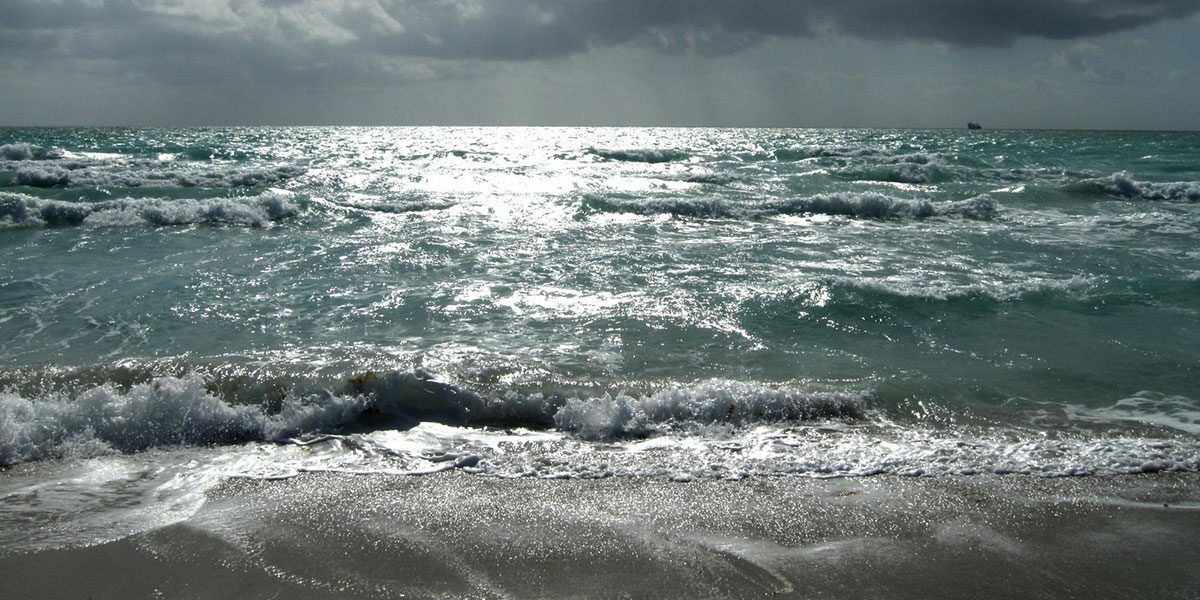Amid pandemic, climate scientists imagine Earth Day 2070
Earth Day 2020 marked 50 years since the first nationwide effort to educate the public and raise awareness of environmental issues that threaten the health and sustainability of the planet.
The impacts of global climate change are no less visible at regional and local levels. In the Midwest in 2018, local governments grappled with the costs and cleanup of a 500-year flood, which damaged thousands of homes, while recently erosion has forever changed the shorelines along Lake Michigan.

“By the 2070s, changes in global climate will likely include strong warming across the globe, up to 3 degrees Celsius (5.4 degrees Fahrenheit) relative to late 20th century climate,” said Alan Hamlet, associate professor in the Department of Civil and Environmental Engineering and Earth Sciences. “We’ll expect to see shifts in precipitation that are regionally specific. For example, California, along with states in the southwest region will likely be substantially drier than historical conditions, while the Midwest will be substantially wetter. These global impacts will result in extreme damage to human and natural systems in vulnerable communities, making mitigation efforts to control greenhouse gasses and adaptation efforts to reduce impacts important priorities for governments and communities around the world —– now and in the future.”
Notre Dame’s climate scientists are among the millions of Americans now staying safe at home, remotely teaching their students through the coronavirus pandemic. Most, if not all of current field research projects, are on hold. The planet looks very different today than it did 50 years ago. During an historical and uncertain time, they imagine what the planet will look like 50 years from now.
Their responses underscore the reality of a world in concurrent crises, an undeniable need for action now and hope for the future.
‘A new lens’

“The pandemic will shape how I see the world moving forward, so I answer this question through a new lens. Over the past weeks, while global activity we once thought was unstoppable has ground to a halt, our natural world continues to show us what is possible. We see evidence of cleaner air, clearer water, and the sounds of nature ringing true in our ears as spring arrives once again. In 50 years, I hope we will have learned how to strike a more harmonious balance whereby both humans and the natural world can thrive.”
Jennifer Tank, director of the Environmental Change Initiative
and the Ludmilla F., Stephen J., and Robert T. Galla Professor of Biological Sciences
“Our planet will look back with gratitude at the cognizance born from the great darkness of this coronavirus, which will have heightened awareness of human impacts on ecosystems and how those could foster novel viruses. New modalities for virtual work and collaboration, reducing energy consumption and pollution, could be just the beginning of a movement that fosters greater respect for nature, its creatures and the environment, while enabling more seamless balance of home and work life to help families thrive.”
Tracy Kijewski-Correa,
the Leo E. and Patti Ruth Linbeck Collegiate Chair and Associate Professor of Civil and Environmental Engineering and Earth Sciences
The future need for climate action now
“Lower emissions of pollutants in our atmosphere during recent coronavirus shutdowns is an indicator of what our planet would be in 50 years if we embrace renewable energy for travel, home and commercial needs. We need to find ways to minimize the carbon footprint by embracing clean, green, energy quickly.”
Prashant Kamat,
Rev. John A. Zahm, C.S.C., Professor of Science in Chemistry and Biochemistry
“In 50 years, if we allow it to happen, we may live on a warmer planet devoid of polar ice caps and glaciers, with higher seas that inundate coastal areas, and a larger human population that demands more and more food and natural resources from a depleted Earth. Countries will battle over limited fresh water, the most important resource on the planet. However, respect for our fragile planet can reverse these trends, and our children today will lead the way to a better future.”
Gary Lamberti,
Professor of Biological Sciences
Hope for the future
“Our Earth will be a more salubrious planet, with its inhabitants having realized and appreciated — through unpredictable events — that it is a privilege from heaven to live on it.”
Harindra Joseph Fernando,
the Wayne and Diana Murdy Professor of Civil and Environmental Engineering and Earth Sciences

“In 50 years, our planet will be recovering. The students at Notre Dame today will spend their entire adult lives addressing and adjusting to the long-term consequences of environmental changes underway now.”
Jason McLachlan,
Associate Professor of Biological Sciences
Learn more about how researchers at the University of Notre Dame are working to find solutions to society’s most complex, environmental challenges at https://research.nd.edu/news/working-towards-a-healthier-more-sustainable-planet/.
Originally published by Jessica Sieff at news.nd.edu on April 22, 2020.
Contact: Jessica Sieff, assistant director of media relations, 574-631-3933, [email protected]
April 22, 2020
More Like This
Related PostsLet your curiosity roam! If you enjoyed the insights here, we think you might enjoy discovering the following publications.









